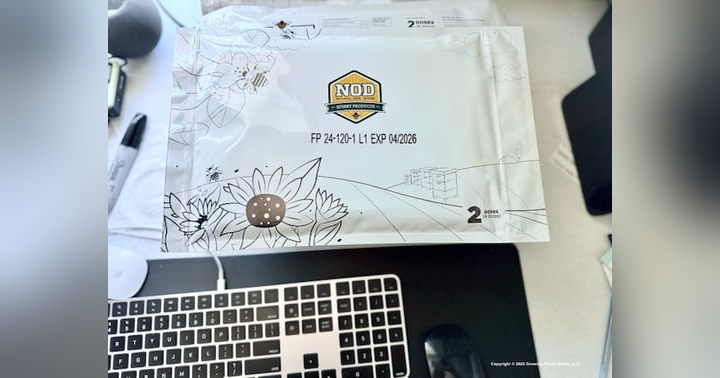Late Winter Deadouts


Then one day, the wind dies down, the sun comes out and the air warms a touch. You are able to go out to that colony and carefully crack it open. What do you hear? What do you smell? Finally… what do you see?
Opening a dead colony (or ‘deadout’) is a sad experience. Not a ‘can be’, or ‘might be’. It is a loss: Emotional or financial or both.
You can learn a lot by opening a deadout. Kim Flottum and Jim Tew talk about this in their Honey Bee Obscura podcast episode “What’s That Smell (The Bad)” released November 11, 2021.
Winter inspection of a deadout is a Winter chore you will need to do. There are a couple goals of this exercise: 1.) Determine the cause, 2.) Clean out the equipment, 3.) Prep for the spring.

The second most likely cause is that the colony starved. Generally speaking, (remembering there are exceptions to everything in beekeeping, as Kim says, “… it depends…”) If there is lots of food and pollen, but no bees in a center cluster. Probably varroa. You can also confirm this diagnosis by turning a brood frame upside-down and look for varroa fecal spots on the tops and sides of brood cells. This is not a sole indicator though… since varroa is always present. But if individual cells are heavily speckled, there is a strong probability varroa factored into the deadout.

Next, if the cluster of bees is small and crammed into the top hive body, then the primary cause of their death is they ran out of food and starved.
There are multiple other (and combinations of everything) that can lead to a colony’s death over the winter. I’ve listed only two likely reasons which should be ruled out before going down more obscure reasons. When in doubt, enlist the aid of another (more experienced) beekeeper or mentor. Draw on their knowledge of the local conditions.
I will add at this point, while you are making your inspection, pull our your cell phone and take lots of photos for later review and analysis.
After this ‘determination of cause’, tear apart and clean out all the dead bees. You don’t want the mass of dead bees between the frames and on the bottom board to get moldy. THAT is a mess. Take the hive body away and perform this in a different part of your bee yard. Clean each frame of dead bees. Cull/remove old, black comb so it is not reused. This is a miserable job, but you get used to it quickly. If you do this on a colder day, you will not have to put up with curious or hungry bees. Just be careful of the comb as it will be fragile in the cold.
Final step, is to figure out what you want to do with the empty equipment. All those frames of drawn brood comb have been referred to as a ‘beekeepers most valuable resource’ - and they are. The drawn comb and drawn comb with honey and pollen, will be readily accepted by the new colony (package or nuc) and the queen will get to business right way. There is no delay or while the colony draws out foundation.

If you chose to store the empty equipment, ideally you will want to move them indoors so they are protected from the elements and pests. They don’t need to be heated and it is best to store them where they are out of the elements but can freeze to help ward off pests such as the opportunistic wax moth.
Late winter inspection and cleaning of colonies that did not survive the winter is a difficult job. Try to use it to better your beekeeping management skills. Remember also, sometimes no matter what you do, colonies will die. You can improve your odds (and therefore those of your colonies) by learning what caused a loss and adapting your colony management techniques and skills to prepare for the next winter.
Thanks for reading and thank you for listening to Beekeeping Today Podcast.














